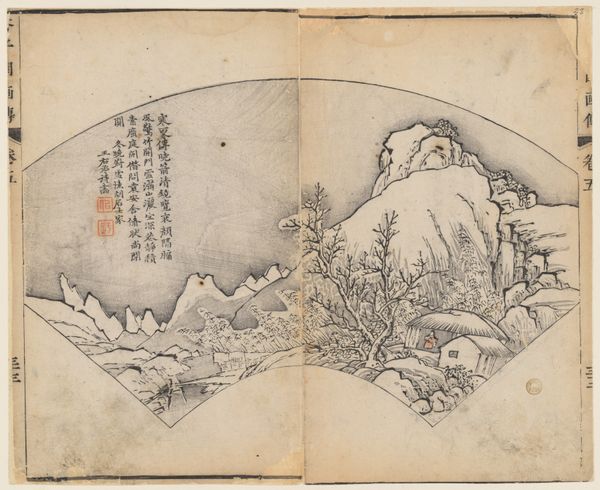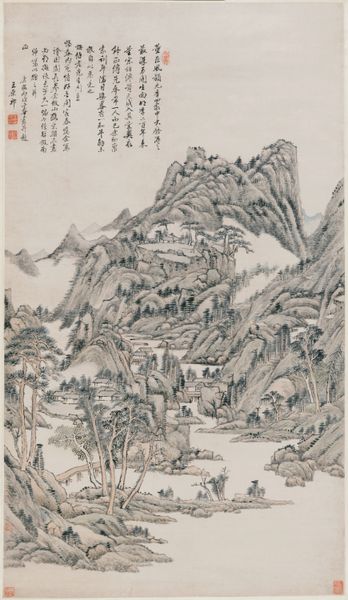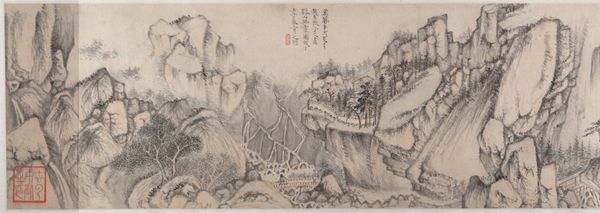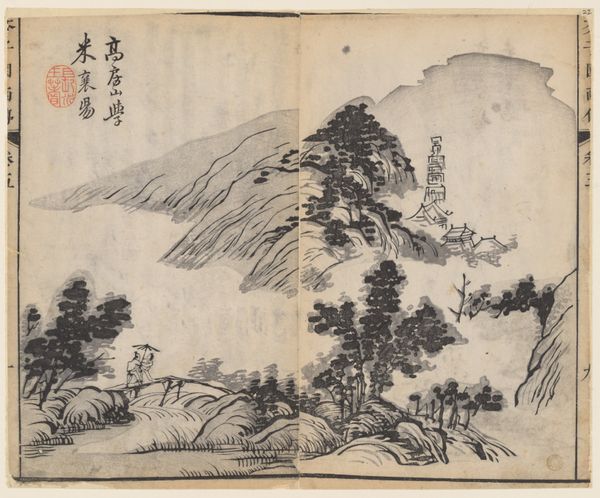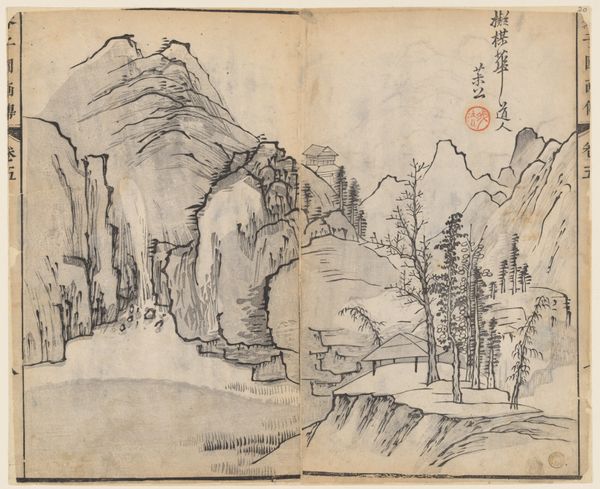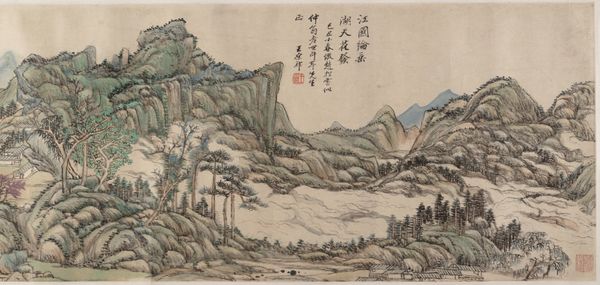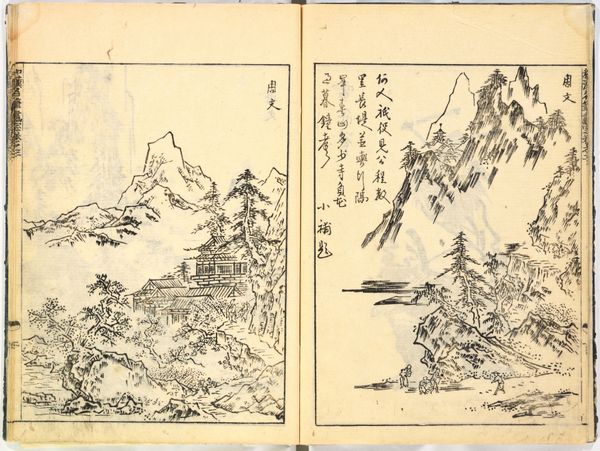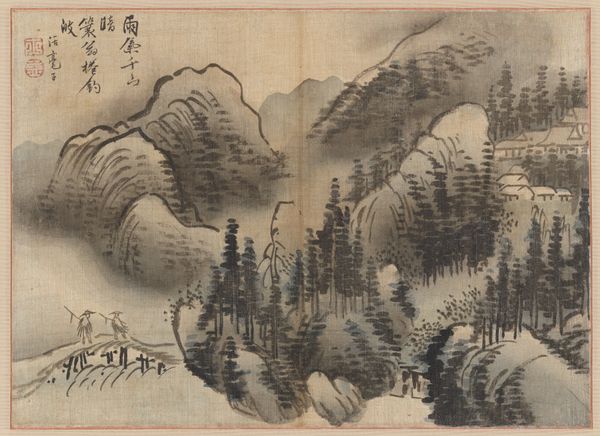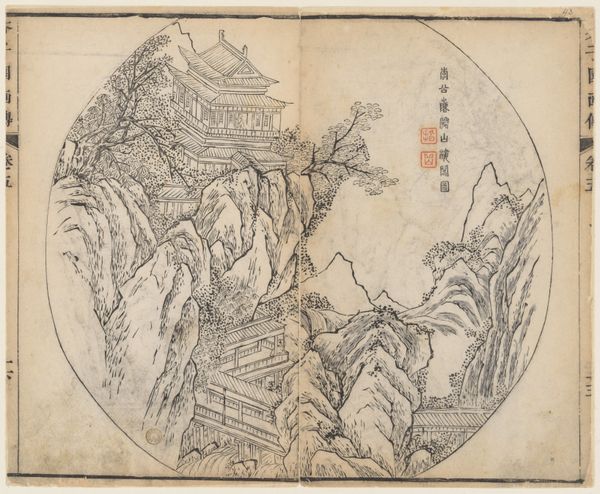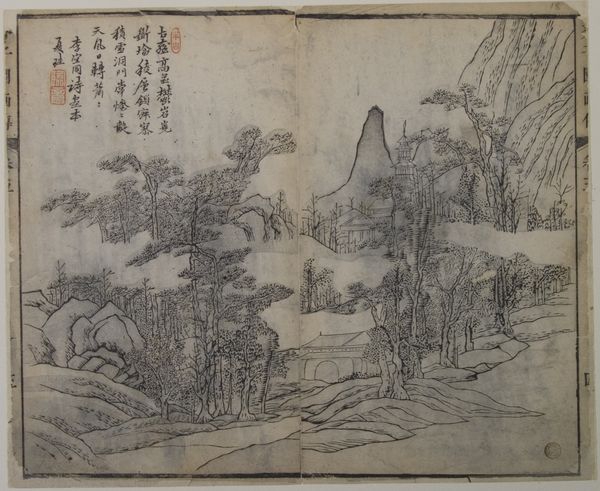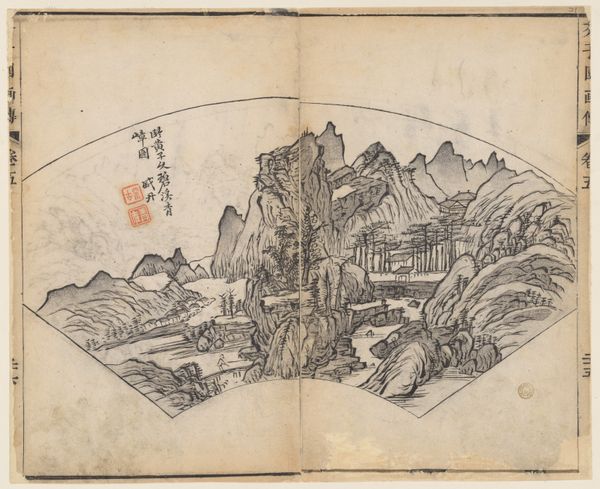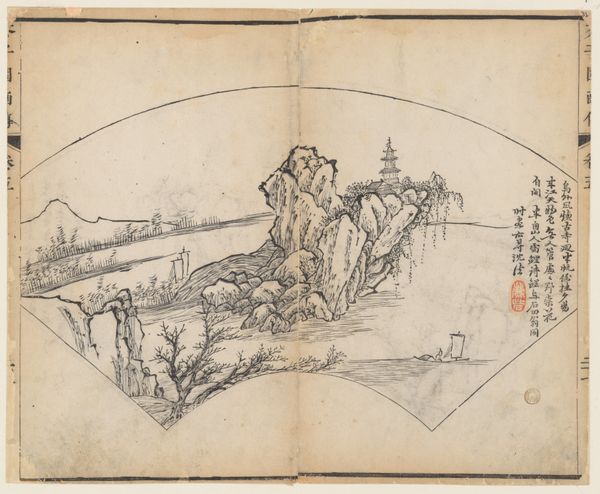
Snowy Peaks Touching the Heavens, in the manner of Snow-covered Inn by Jing Hao (active ca. 870–ca. 930), from the Mustard Seed Garden Manual of Painting 1679
0:00
0:00
print, woodblock-print, woodcut
# print
#
asian-art
#
landscape
#
woodblock-print
#
woodcut
Dimensions: 9 5/8 x 11 13/16 in. (24.4 x 30 cm)
Copyright: Public Domain
Editor: Here we have "Snowy Peaks Touching the Heavens, in the manner of Snow-covered Inn by Jing Hao," from the Mustard Seed Garden Manual of Painting, created in 1679. It's a woodblock print by Wang Gai. It feels quite austere to me, almost isolating. What draws your eye? Curator: Isolation is key. Look at how the small building clings to the precipice, dwarfed by the mountains. This wasn’t just about depicting landscape; it’s about social commentary. Consider the political climate of the late Ming and early Qing Dynasties. What does this deliberate distancing from society, depicted through the seemingly simple landscape, tell us about the artist's feelings on the ruling class? Editor: That's an interesting point! I was focusing on the stark visual contrast, but you're suggesting it's also a commentary on power. The vulnerability is quite clear in the architectural details; the small house could fall off the mountainside! Curator: Precisely. Think of landscape painting in the Chinese tradition, not as mere decoration, but as coded expressions. What power structures might the "heavens" in the title allude to? Is it reverence or critique? Editor: So the “heavens” could represent the imperial court, making the snowy peaks, well, insurmountable obstacles. I originally thought of the print as just a quiet scene, but seeing it as a potentially rebellious statement makes it much more powerful. Curator: Indeed. Art always engages within its political present, consciously or not. This print invites us to question not only the landscape, but the societal structures it reflects. Editor: I'll never look at a landscape the same way again. Curator: And hopefully you’ll also remember to apply intersectional thinking across your analyses; understanding identity, gender, race and politics matters across any subject.
Comments
No comments
Be the first to comment and join the conversation on the ultimate creative platform.
